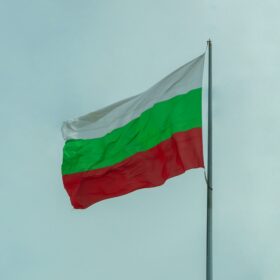How to combine off-grid agrivoltaics with large-scale hydrogen production
Scientists in the United Kingdom have simulated how a 1 GW off-grid agrivoltaic facility may be used to fuel hydrogen fuel electric cell vehicles across Australia, California, China, Nigeria, and Spain. Their techno-economic analysis showed that the proposed combination could provide a levelized cost of hydrogen ranging from $3.90/kg to $8.13/kg.
Fraunhofer ISE, AMOLF unveil TOPCon solar cell based on metal nanowire grid front electrodes
The two research institutes used silver nanowire grids as an alternative to indium tin oxide for the cell’s transparent electrodes. They claim this is the first time that a metallic nanostructure offers photonic gain in a solar cell.
Researchers warn of risk from weather-related extreme low-production events for global PV fleet
New research from China shows that regions with dense PV installations, such as Southern China, Central and Northern Europe, Central and Eastern America, and Japan, are the most exposed to weather-related extreme low-production events. The researchers proposed a mitigation strategy to reduce the impact of these events on PV power generation.
Moisture-resistant perovskite solar cell with 25.14% efficiency
An international research team has fabricated a perovskite solar cell using sulfur-based additives to improve its resistance to moisture. The device not only achieved high efficiency levels but was also able to retain about 96% of its efficiency after 1,000 h.
Oman launches tender for 280 MW solar plant
Interested developers will have time until February 3 to submit their proposals.
Marstek debuts AC coupled residential batteries
The Chinese manufacturer said its new products have a capacity of up to 5.1 kWh and are scalable up to 20.48 kWh. The systems feature a depth of discharge of 90% and can purportedly operate for more than 6,000 cycles.
Panasonic offers residential heat pump solution that uses solar radiation forecasts
Panasonic has unveiled a new version of its Eco Cute CO2 heat pump that produces domestic hot water mostly during daytime based on solar radiation data. It integrates a dedicated app to obtain day-ahead solar forecasts and schedule water heating hours for the next day.
Fraunhofer ISE warns of risk from higher than expected UV-induced degradation in TOPCon, PERC, HJT cells
The researchers of the German institute explained that UV-induced degradation may cause larger than expected efficiency and voltage losses in all dominant cell technologies, including TOPCon devices. The scientists expect that silicon nitride layers could be used to enhance TOPCon UV stability compared to PECVD layers typically utilized in PERC and heterojunction cells.
Bulgaria allocates 3 GW of renewables capacity, 1.17 GW of storage in auction
The Bulgarian authorities awarded BGN 526 million ($284 million) to 397 renewable energy projects in the country’s latest procurement exercise.
Floating PV system designed for offshore waters can withstand waves up to 4 m
A Chinese research team has developed a floating PV system that purportedly offers high stability and superior seakeeping performance. It features a series of floating pontoons for buoyancy, coupled with a truss-frame support structure for solar panels.











